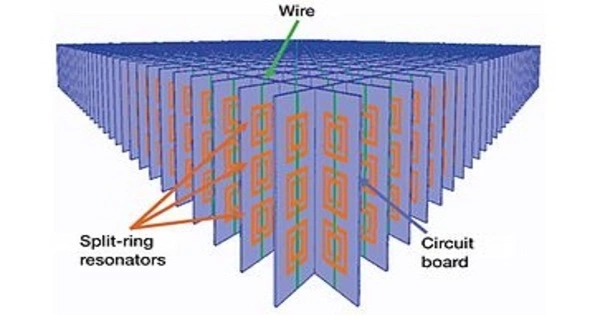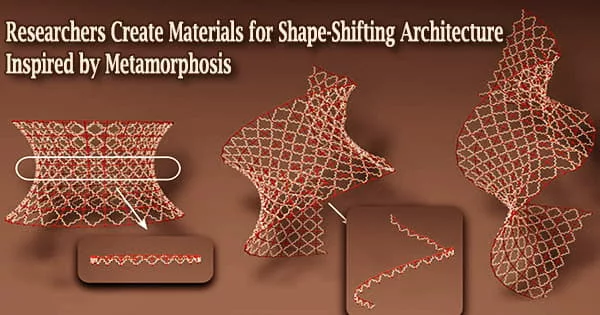A split-ring resonator (SRR) is a synthetic structure found in metamaterials. It is a type of electromagnetic metamaterial that exhibits unique properties not found in natural materials. Its goal is to generate the desired magnetic susceptibility (magnetic response) in various types of metamaterials at frequencies up to 200 terahertz. It is a small, artificial structure typically made up of a ring or rings that have been split or cut into segments, hence the name split-ring resonator.
These media provide the necessary strong magnetic coupling to an applied electromagnetic field that conventional materials do not provide. A periodic array of split ring resonators, for example, can produce an effect such as negative permeability.
A single cell SRR consists of two enclosed loops with splits at opposite ends. The loops are made of a nonmagnetic metal, such as copper, with a small gap between them. The loops can be concentric or square, with or without gaps.
A magnetic flux passing through the metal rings induces rotating currents, which generate their own flux to either enhance or oppose the incident field (depending on the SRR resonant properties). This is a dipolar field pattern. The large capacitance values produced by the small gaps between the rings lower the resonating frequency. As a result, the structure’s dimensions are small in comparison to the resonant wavelength. As a result, radiative losses are low and quality factors are very high.
Applications
SRRs are typically used as a component of metamaterials, which are materials engineered to have specific properties not found in natural materials. The unique properties of SRRs arise from the way they interact with electromagnetic waves. When an electromagnetic wave encounters an SRR, it induces a magnetic field that is perpendicular to the electric field of the wave. This interaction can lead to some interesting effects, such as negative refractive index or the ability to focus light beyond the diffraction limit.
SRRs have applications in a variety of fields, including optics, telecommunications, and microwave engineering. One common application is in the design of perfect lenses, which are lenses that can focus light with a resolution beyond the diffraction limit. SRRs can also be used in the design of high-frequency filters and antennas, as well as in the development of cloaking devices that can render objects invisible to certain wavelengths of light.















